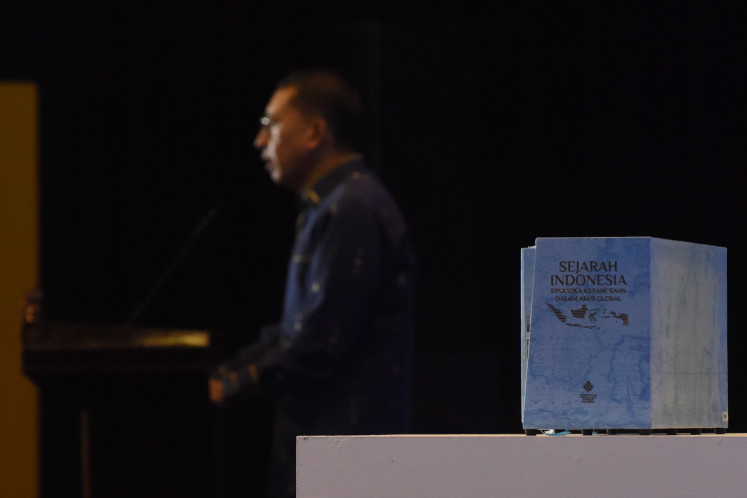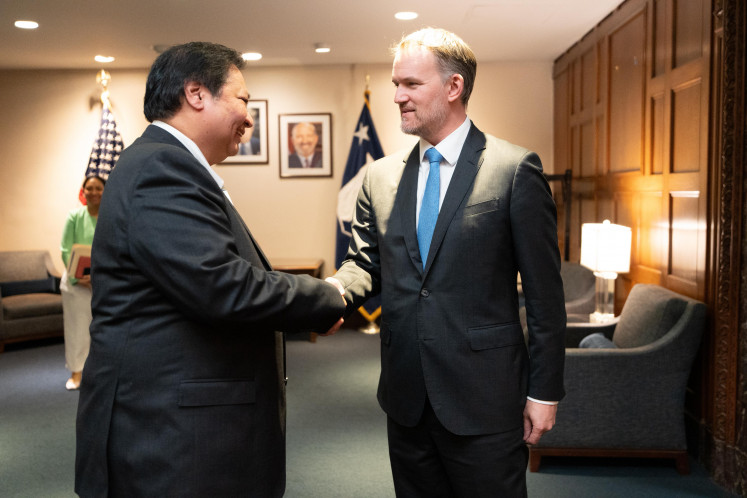Popular Reads
Top Results
Can't find what you're looking for?
View all search resultsPopular Reads
Top Results
Can't find what you're looking for?
View all search resultsBI bows to political pressure, cuts rate again
Bank Indonesia cut its benchmark rate for second consecutive month on Thursday amid growing political pressure for lower borrowing costs
Change text size
Gift Premium Articles
to Anyone
Bank Indonesia cut its benchmark rate for second consecutive month on Thursday amid growing political pressure for lower borrowing costs.
The central bank reduced its key rate by 25 basis points (bps) to 7 percent following a similar rate cut in January after rates were persistently high for almost a year. At the same time, it lowered both deposit and lending facilities by 25 bps, to 5 percent and 7.5 percent, respectively.
As part of its monetary easing policy, Bank Indonesia (BI) also reduced its reserve requirement (GWM) by 1 percent from 7.5 percent to 6.5 percent, effective from March 16, following the first GWM cut in November in an attempt to inject liquidity into the banking system.
BI governor Agus Martowardojo said the central bank decided to continue its monetary easing amid signs of improvement in the country's macroeconomic indicators such as a lower current account deficit and the downward trend in the inflation rate as well as continued inflows of foreign capital into the country.
With the US Federal Reserve raising its fund rate in December last year, uncertainty in global financial markets continued to recede, prompting capital inflows into emerging markets, including Indonesia, he said.
Agus said inflows entering government bonds, stocks and corporate bonds had already reached Rp 33 trillion (US$2.44 billion) since early January, in stark opposition to condition over the most part of 2015, which saw significant foreign funds exiting the country.
The fund inflows are predicted to help strengthen the rupiah and increase share prices.
Along with its peers in Asia, the central bank is facing mounting calls from the government and businesspeople to cut its rate to stoke economic growth, despite a lingering risk of volatility in the market.
As part of BI's monetary easing, Agus said the cut in the primary GWM would inject an additional liquidity of around Rp 34 trillion into the banking system, which banks could use to boost their lending activity for at least the next one to three months.
The amount of extra liquidity is higher than the Rp 18 trillion injected into the system when the central bank first lowered its reserve requirement in November last year.
BI deputy governor Perry Warjiyo said the policy combination would help accelerate the banking industry's efforts to decrease its interest rates and provide more room to grow its loans by 14 percent this year, higher than the prediction of 12.5 percent, if a cut in the reserve requirement is not seen.
However, Glenn Maguire, ANZ chief economist for South Asia, ASEAN and Pacific, said the transmission of the GWM cut would depend on loan-demand conditions, for which the price, or the lending interest rate, had only fallen by 25 bps.
Separately, Bank Rakyat Indonesia (BRI) finance director Haru Koesmahargyo said the central bank had taken a highly supportive stance toward the banking industry as it helped lenders increase the supply of liquidity.










